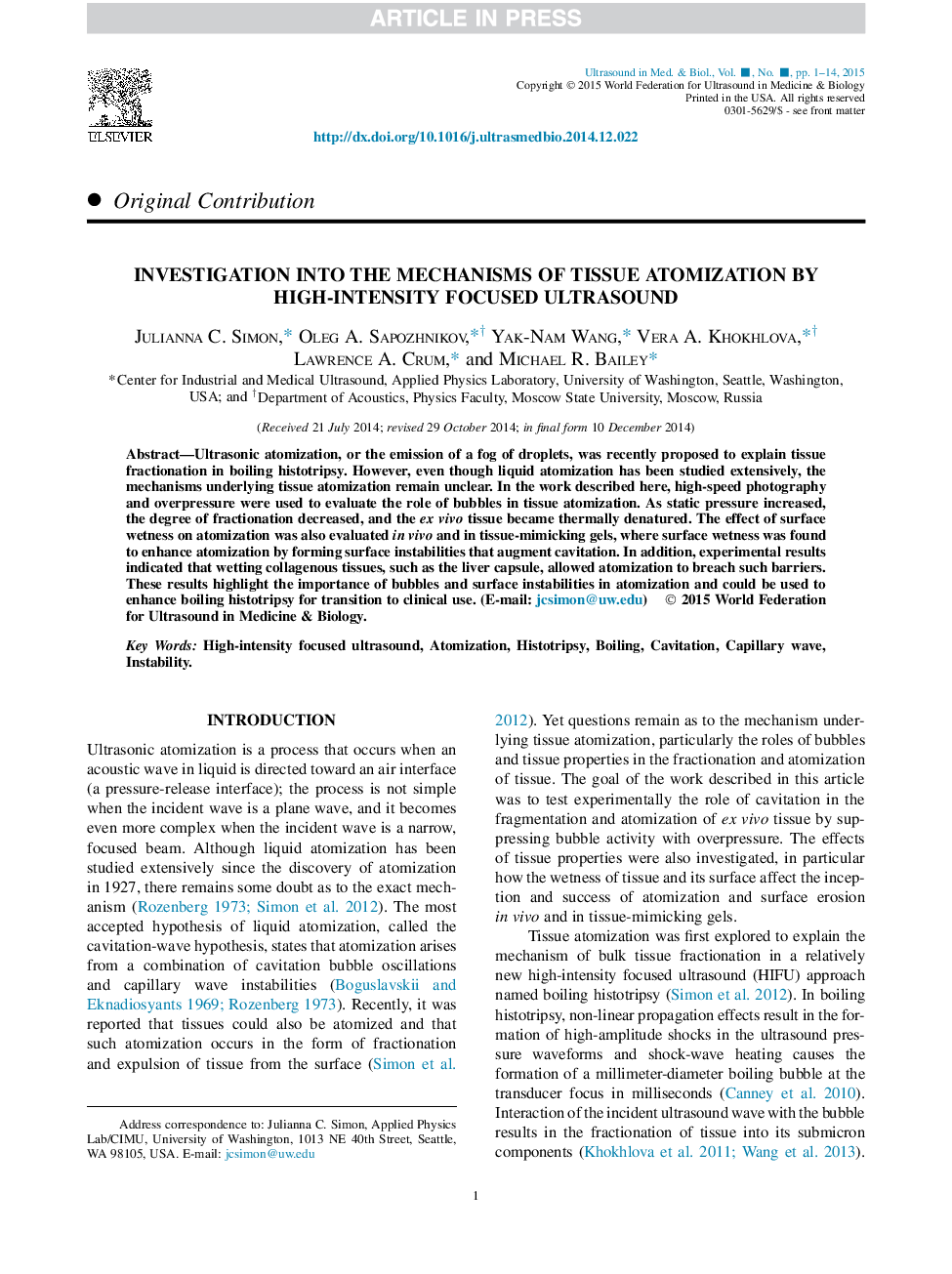| Article ID | Journal | Published Year | Pages | File Type |
|---|---|---|---|---|
| 10691449 | Ultrasound in Medicine & Biology | 2015 | 14 Pages |
Abstract
Ultrasonic atomization, or the emission of a fog of droplets, was recently proposed to explain tissue fractionation in boiling histotripsy. However, even though liquid atomization has been studied extensively, the mechanisms underlying tissue atomization remain unclear. In the work described here, high-speed photography and overpressure were used to evaluate the role of bubbles in tissue atomization. As static pressure increased, the degree of fractionation decreased, and the ex vivo tissue became thermally denatured. The effect of surface wetness on atomization was also evaluated in vivo and in tissue-mimicking gels, where surface wetness was found to enhance atomization by forming surface instabilities that augment cavitation. In addition, experimental results indicated that wetting collagenous tissues, such as the liver capsule, allowed atomization to breach such barriers. These results highlight the importance of bubbles and surface instabilities in atomization and could be used to enhance boiling histotripsy for transition to clinical use.
Keywords
Related Topics
Physical Sciences and Engineering
Physics and Astronomy
Acoustics and Ultrasonics
Authors
Julianna C. Simon, Oleg A. Sapozhnikov, Yak-Nam Wang, Vera A. Khokhlova, Lawrence A. Crum, Michael R. Bailey,
